Your security
posture and company’s profitability are more closely linked than you may
realize
Admit it: Growing and protecting your
company’s bottom line is a top priority. While many business professionals
feign their organization’s mission or value statement as their ultimate driving
force, often time, most value-centric priorities take a back seat to the
almighty dollar. Why shouldn’t it? After all, money helps to keep the lights
on, employees working, and the corporate machine chugging along. But what if
something was to cause that well-oiled machine to come to a grinding halt?
That’s precisely what can happen to companies that lack or have a poor cyber security posture.
Security posture refers to the strength of your overall cyber security defense. This is important because cyber security threats are ever increasing, and cyber
attacks are considered the third greatest global threat, according to the World Economic Forum (WEF). At the risk of repeating ourselves by
restating what we’ve said in many articles: Every business needs to be prepared
because it’s not if but rather when cyber security
attacks will strike. A 2018 Deloitte survey of 1,100 U.S. executives indicates that more
than 90% of their companies have faced a cyber security
challenge, and nearly one-third experienced a cyber security breach
within the past two years. Increasing your organization’s cyber security posture helps to help your business block
most cyber security attacks and avoid the
costs associated with them.
Let’s hash it out.
The financial
impact of cybercrime
and other related costs
Accenture reports
that cybercrime cost individual U.S. organizations an average of $13 million in
2018, an increase of 12% over the previous year. The costs
of cyber attacks and data breaches are anticipated to increase over the
next few years. Cybersecurity Ventures estimates that cybercrime damages will cost
the global community $6 trillion
annually by 2021.
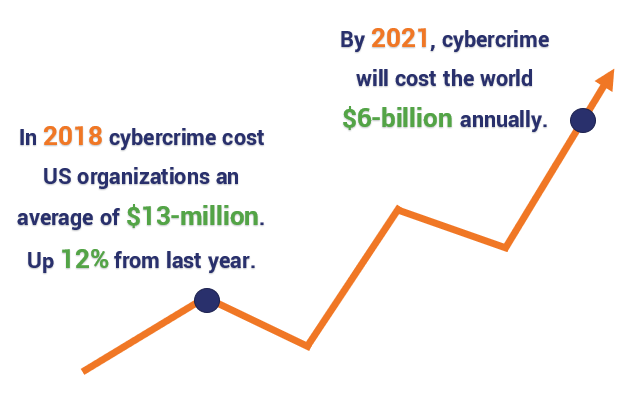
Calculating the cost of cybercrime isn’t as straightforward a task as one might
think. Many factors can contribute to cybercrime costs, including (but
certainly not limited to):
- Lost, stolen, or
destroyed data; - Purchasing a decryption
tool (paying a ransom) in response to a ransomware attack; - Theft of
intellectual property; - Stolen funds;
- Downtime during a
cyber attack and the following disruption to
business operations following an attack; - The impact to
brand image/reputation; - Loss of customer and
investor trust; - Forensic investigation
costs; - Legal costs;
- Restoration costs;
and - Fines for not
meeting regulatory compliance requirements
(such as Payment Card Industry [PCI], Health Insurance Portability and
Accountability Act [HIPAA], and the European Union’s General Data Protection
Regulation [GDPR]).
A recent example of how a cyber attack
can affect business operations involves the Hoya Corporation, a Japanese
optical products manufacturer with manufacturing plants in Thailand. At the end
of February 2019, the company was targeted by a malware attack that infected about 100 computers, resulting
in a three-day partial shutdown of its Thailand production operations and invoice
operations in Japan. This reduced factory output by approximately 60%. In an official statement, the company reported that the computers were
“infected with ID and password stealing viruses.”
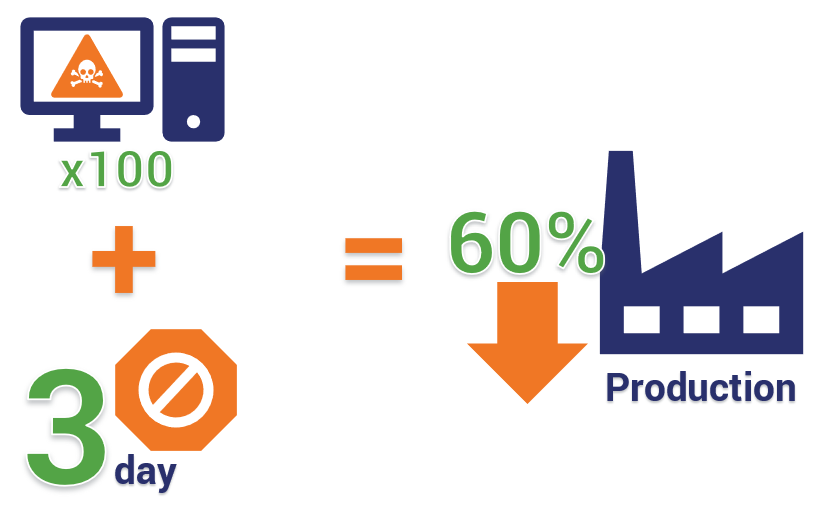
Luckily for Hoya, their cyber posture was not as bad as other companies
that have been victimized by malware attacks — while they were unable to
prevent the initial phase of the attack (the spread of the malware), they did
prevent the second phase’s “cryptojacking” attack, which intended to use the
computers for cryptocurrency mining. As a bonus, Hoya also reported that no
data leak was detected.
With the growing prevalence of cyber security attacks, there is a variation of a Warren Buffet quote floating around the internet that comes to mind that someone has altered to fit cyber security:
“It takes 20 years to build a reputation and five minutes (of cyber incident) to ruin it.” Though Buffett may not have added those extra words in the parentheses, the statement still rings true. One cyber attack, data breach, or data disclosure can destroy your business by ruining its reputation, image, and standing in the industry and community. The story of the now-defunct code hosting service Code Spaces is a prime example of such a situation. After they sustained a cyber attack, their company was forced to shut down permanently. Thankfully, in the case of Hoya Corporation, they were able to prevent the main attack before losing thousands — or even millions — of dollars in cryptocurrency or invaluable client data.
How your cyber posture can help protect your bottom
line
A PricewaterhouseCoopers (PwC) survey
of 3,000 business leaders from more than 80 territories reports “businesses of
all sizes are ill-prepared to protect themselves and their customers.” If your
company is like any of these businesses, enhancing your cyber security posture by increasing your cyber resilience is the most obvious way to reduce your risk
of becoming a victim of successful cyber security attacks.
This, in turn, helps to protect and improve your business’s bottom line by
avoiding the resulting costs of attacks and data breaches.
Increasing your cyber security defense strength can help you:
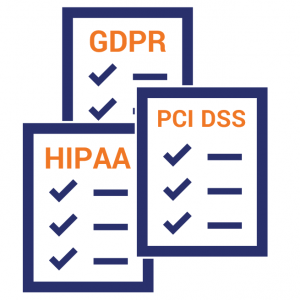
- Reduce costs by leveraging
technology and industry best practices; - Adhere to GDPR,
HIPAA,
and PCI regulatory compliance requirements;
and - Avoid potentially
avoid hundreds of thousands of dollars (or even millions) in fines and
penalties. PCI noncompliance can even result in a possible suspension of your
company’s ability to process card payments.
Here are some of the ways you can
strengthen your cyber security posture to
protect your bottom line:
Enhancing your cyber posture: Create barriers for
cybercriminals
In IT
security, the most basic way to ward off cyber
attacks is the use of firewalls, antivirus, and antimalware platforms.
These first-line-of-defense tools provide a barrier between your network and
external networks and threats. The idea here is to make it more difficult for
attackers to break into and move through your network so you have more time to
identify any threat and respond. The more walls you throw up, the more time a hacker
has to spend getting through your defenses — this makes their efforts less
profitable and you appear like less of an appealing target.
Firewalls
vary by type, purpose and application; they can be hardware, software, or both.
Some involve packet filtering and stateful inspection while others aim to
prevent application-layer attacks and offer threat detection and remediation. But
don’t stop at just implementing firewalls. While effective in combination with
antivirus and antimalware solutions at repelling many threats, they cannot protect you from everything — this is why it’s imperative to have other
protections in place.
Implementing
password security measures
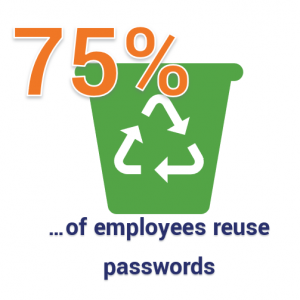
Another method of protection is
requiring frequently-changing and secure passwords of your employees and
customers. This is particular important considering the results of SailPoint’s 2018
survey, which shows that 75% of
surveyed employees report reusing passwords across multiple accounts, and 56% use the same password for both personal
and work accounts. Flimsy password
security is the Achilles’ heel of your IT security:
No matter how seemingly impenetrable your cyber
security defense “fortress” may be, all it takes it one employee to
leave the main door unbarred for a hacker to walk right in.
Protecting
email
Email is a huge vulnerability for many
businesses. According to Cofense,
91% of cyber security attacks start with a
spear-phishing email. Some of the ways to address these concerns is to
implement email security and anti phishing solutions such as the use of email and document signing certificates. These security certs help employees
digitally sign and encrypt emails and sign sensitive or confidential documents
for electronic communications. These cyber protections help to authenticate email
senders, prevent email and document tampering, certify documents, and are
compliant with many industry standards. Email certificates enable employees to
verify whether an email they receive from their boss or a colleague was, in
fact, sent by them and is not a case of phishing or CEO fraud. Furthermore,
sending encrypted emails protects sensitive or confidential information from
being “read” by eavesdroppers and man-in-the-middle (MitM) attackers.
Enhancing your cyber posture: Test your network for
vulnerabilities
Two of the most effective ways to
check for weaknesses in your cyber security posture
are the use of vulnerability assessments and penetration testing (also known as
pen tests). A vulnerability assessment helps to identify, analyze, and
prioritize any existing vulnerabilities in your systems, applications, and IT
infrastructure. This differs from a pen test, which is when a cyber security
expert (often a “white hat” hacker, or the “good guy” for all intents and
purposes) runs attacks against your systems to test their defenses to find and
exploit their vulnerabilities. The goal is to find any weaknesses in your
defenses before a “black hat” hacker (the “bad guy”) does.
Enhancing your cyber posture: Increase
visibility to monitor and identify threats
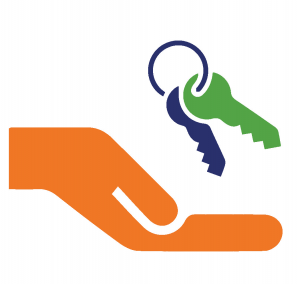
Knowing what is going on within your
network is an essential factor in strengthening your cyber
posture. External actors can hack their way through your defenses or
simply walk through the front door when employees unwittingly provide their
credentials and personal information (think phishing). Regardless of how they gain
access, you must be able to recognize their activities quickly enough to
prevent them from proceeding any further and mitigate the damage they cause.
This requires increasing visibility into your network, traffic, and infrastructure
through network monitoring and protection tools such as intrusion detection
systems (IDSs) and intrusion prevention systems (IPSs), security incident and
event management (SIEM) systems, and the establishment of a cyber security
operation center (either in-house or external).
During the malware attack on Hoya, the
company’s officials reported that a network server overload was noticed, which
led them to investigate — and ultimately stop — the hacker’s attack from
progressing to phase two. This likely involved the use of a cyber security
operations center team monitoring their network, operating system, firewall,
IDS activities, and endpoint devices. An effective CSOC uses SIEM tools and
IDSs to monitor and identify threats.
However, even the best IDSs can’t
protect against data disclosure that can occur due to phishing emails. That’s
why it’s important to also implement other methods of protection and prevention
that focus on your employees.
Enhancing your cyber posture: Increase employee security with
training and policies
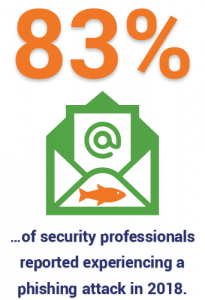
Eighty-three percent of surveyed global
information security professionals reported experienced phishing attacks in 2018, according to data from ProofPoint. As
dire as this statistic may be, the good news is that there are things you can
do to prevent phishing and cyber attacks
from being successful and reduce your company’s potential losses. One of these
methods is to implement cyber security awareness training and regularly test
your employees to ensure they understand and can apply their cyber security
knowledge to real-life scenarios. This could include quarterly, bi-annual, or
annual training and phishing tests to identify areas in which employees lack
knowledge to improve future training methods.
Other methods include:
- Using email
protection and anti phishing solutions, - Implementing and
enforcing computer use policies, and - Limiting access
to databases, client records, and other sensitive systems to only those
employees whose jobs necessitate access through a policy of least privilege
(POLP).
Enhancing your cyber posture: Increase cyber security capabilities with
third-party services
Earlier, we mentioned the idea of a cyber
security operation center, which is a security-as-a-service product that is
used to monitor, identify threats, and respond to security attacks. However,
not all companies have the capacity or budget to implement an in-house CSOC.
This is why it’s beneficial to use a third-party SaaS solution to augment your
existing defenses with a team of IT security
experts who provide 24/7 security monitoring. Partnering with a third-party
security-as-a-service provider is a cost-effective way of gaining the benefits
of an in-house CSOC without having to pay the hefty price tag that often accompanies
hiring an entire team of in-house IT security pros. (One such example of a CSOC
is CWatch Web
by Comodo.)
How to make your cyber posture work in favor of growing your
company’s bank account
So far, we’ve discussed many of the benefits of cyber security in terms of how it helps
to reduce the costs that could from cyber attacks.
But, how can you capitalize on the advantages of
cyber security posture strength to
increase your business’s profitability? It often boils down to making your
customers feel more comfortable and confident.
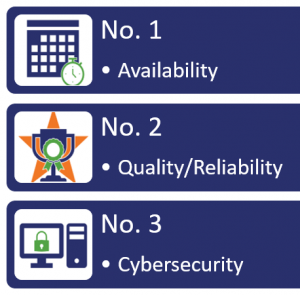
According to a report
by Capgemini’s Digital Transformation Institute, 77% of consumers rank cyber security as the third most important factor
when choosing a primary retailer and their products. The report states that
customers are more satisfied and “approximately 40% of consumers would be
willing to increase their online spend 20% or more if their primary retailer
gave them certain assurances which built their trust.” This goes to show
that implementing cyber security best practices not only helps to improve your
site’s security and reduce cybercrime-related costs, but it can potentially increase
your profitability. However, there is more to it than simply implementing cyber
security methods to increase your security posture
— the key to driving business (and its resulting profit) is creating a perception of security.
How to profit from your
security
posture: Talk
about your cyber security
efforts and initiatives

We already covered some of these
concerns in the previous section about how to protect your bottom line by
mitigating costs relating to cyber security attacks
and cybercrime. What we didn’t
mention was the idea of communicating your efforts to the public, your
customers, and investors alike. As the Capgemini survey shows, consumers care
about the security of their data and want to know that you’re doing everything
within your power to protect it.
According to an article
by Consumer Goods Technology (CGT), improving your
bottom line as a retail businesses is intricately tied to data privacy
and security:
“Cyber security represents a lucrative opportunity for retailers to improve customer satisfaction and drive online spending,” added Tim Bridges, Capgemini’s global sector lead for consumer products, retail and distribution. “Only retailers that are able to efficiently align their cyber security measures with customer expectations will be able to impact top line revenue.”
What all of this means is that you
need to be able to address consumer privacy concerns with clear messaging about
how their information may be used and
what you are doing to protect their data. Your ability to articulate this
information is a significant factor in influencing and building consumer trust.
How to profit from
your security
posture:
Increase accessibility and security across all platforms
Make your company and services more
accessible and secure across all channels — your website, email, call center,
social channels, brick-and-mortar point of sale (POS) systems. etc. Consumers
want to shop how, when, and where it is most convenient for them. This means
using cyber security technologies and best practices that encrypt customer data
to keep it from falling into the wrong hands.

Using SSL/TLS (secure sockets layer
and transport layer security) certificates on your website is a great way to
increase your security and grow customer trust. SSL/TLS certificates — which are essentially the same thing (minus
some technical differences) — are used
to authenticate a website, domain, or organization and create an encrypted
connection while displaying corresponding security indicators (padlock, green
bar, etc.) on a user’s web browser. Many SSL certificates also offer site
seals that you can display on your web pages to increase consumer confidence in
your website and brand.
Visual safety indicators play a
significant role in creating a perception of security, which can contribute to
increasing your overall profitability. According to research from the Baymard
Institute:
“In prior research we have documented how users have little understanding of the actual technical security of web pages and instead mainly rely on what their gut feeling is telling them. It’s therefore recommended that you add visual clues – such as borders, background colors, and site seals – to your online payment forms to increase the perceived security of the sensitive fields in the form in order to make your users feel more comfortable when handing over their credit card information.”
How to profit from
your security
posture:
Get your IT systems & business up and running ASAP
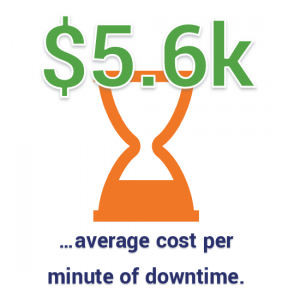
According to Gartner,
the average cost of downtime is $5,600 per minute, which equates to $336,000
per hour. Realistically, many companies can absorb the cost of a few minutes of
downtime without it making much of an impact. However, imagine if that downtime
lasted an average of 14 hours — which is what KnowBe4 report indicated was the average downtime for 500
surveyed companies from 50 countries. That substantial amount of downtime (which
would cost more than $4.7 million) would significantly
reduce your revenue (not to mention your bottom line). For many small to
midsize businesses (SMBs), this type of damage will force them to close their doors within six months.
According to IBM,
downtime not only affects your business operations, it also reduces your
company’s competitive advantage:
“Today, digital business channels represent a greater market share and can drive revenue generation. Apart from revenue and productivity losses, customers do not tolerate downtime. They will quickly abandon a business and use a competitive firm to meet their needs.”
With proper planning, you can reduce the
downtime your business could experience from cyber
attacks and outages by using data backup methods and disaster recovery plans. Having an up-to-date incident response plan,
IT disaster plan, and business continuity plan (BCP) (as well as regularly
testing your plans and data backups) helps to ensure that you have the people, resources,
and processes in place to immediately begin getting your IT systems — and,
ultimately, your business — up and running ASAP after an emergency.
How to profit from
your security
posture:
Increase your competitive advantage through customer confidence, trust, and loyalty
One of the most critical ways your cyber security posture benefits your profitability
comes in the form of increasing consumer confidence and trust. According
to a survey by The
Harris Poll for IBM, data security is a primary concern for global consumers: “75 percent will not buy a product from a company – no
matter how great the products are – if they don’t trust the company to protect
their data.” This means that
consumers who perceive your site as secure are more likely to do business with
your company — giving you a competitive advantage
over other businesses.

Openly communicating about your investment in IT security defenses and protections, as well as
using SSL/TLS certificates that offer web browser security indicators and email
security certificates that authenticate your employees, helps to inspire customer trust and lead to improved customer retention and loyalty. For online retailers, this can result in higher conversions and means that customers are less likely to
abandon their virtual shopping carts.
How to profit from
your security
posture: Boost
your SEO rankings with SSL/TLS certificates
Did you know that you can boost your search engine optimization (SEO)
rankings by up to 5% on
Google simply by installing SSL/TLS certificates on your server? Converting
your website(s) to HTTPS (hypertext transfer protocol secure) communicates that
you have authenticated your domain(s), subdomain(s), and business with the
proper certificate authorities. Google looks at this in a highly favorable
light and has integrated SSL/TLS as one of the ranking signals in its search
results ranking algorithm.
In summary
While providing a strong security
posture is important for your business from an IT security perspective,
it’s easy to see how it’s also imperative from the financial perspective of
your business as well. Increasing your cyber security stance — and
communicating how you have done so — helps to increase customer trust and
confidence, which translates to increased business and revenue. This change of mindset
provides your business with a strategic new approach to increasing
profitability and not just reducing costs.
What other ways do you think that increasing your cyber security posture benefits your bottom line?
As always, be sure to share your thoughts or ask questions in the comments section below.